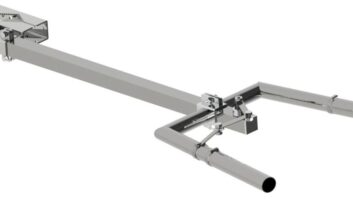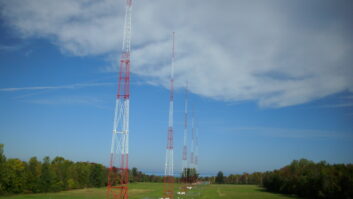Shielded Loop Antennas for the AM Band
Mar 8, 2013 5:01 PM, By Doug Irwin CPBE DRB AMD
Last month I wrote some about making a notch filter for the AM band. However, before you have any signals to notch out, you must first, of course, have some signal to begin with. Let’s talk a little about shielded loop antennas for the AM (or MW) band.
If you have an AM station in your group then it’s quite likely that you’ll need a clean off-air signal at the studio location. That’s not always as easy as it sounds at first; there could be any number reasons that off-air reception is hampered or otherwise less-than-perfect. And even if you don’t have an AM station in your group there are plenty of reasons you might need to receive one cleanly off-air: the station you want to receive could be an EAS source, a news or sports source, or maybe even a competitor. You could be relatively far away from them, or you could be in a noisy environment (electrical noise that is) or perhaps there is a strong local AM causing problems with reception of the weaker signal. A shielded-loop antenna may very well be all you need to pull in a good signal.
Likely you already know that the loop antenna is quite directional; it has its maximum reception parallel to the plane of the loop, and nulls that are orthogonal to the loop (that is, rotated 90 degrees). See Figure 1. The advantage to this is that, by changing the bearing of the loop, you can optimize the desired to undesired ratio as seen on its output. In other words, you might maximize the station you want, hoping for a reduction in strength from the station you don’t want; or you might null out the station you don’t want, while finding the one you do still comes in OK.

Figure 1
�
When a loop is shielded it means that the turns of the loop itself are inside of a shield — one that is open at some point. See Figure 2. This shielding has the very beneficial effect of rejection of electrostatic fields — often the source of noise getting in to an AM receiver. Since the shield is open, the incident magnetic fields (i.e., the station you want to receive) will still induce voltages in the loop, thus providing a signal for your receiver.

Figure 2
�
There are quite a few sources of this type of antenna. For starters, you could roll your own at the very least as an experiment to see if your reception problems are solved. Take a look at the engineer’s notebook entry from Radio magazine at the link below.
Years ago my friend John Scherer used to build and sell shielded loop antennas; I mention his because he used to load the loop a little differently. Take a look at Figure 3. John made square loops from copper tubing, with PVC as the center insulator. The windings themselves were made from a ribbon cable. The number of turns of course depended upon where in the AM band the antenna was supposed to resonate. (If you want to hack this design yourself, take a look at this online calculator to figure out how much inductance the loop will have: technick.net/public/code/cp_dpage.php?aiocp_dp=util_inductance_rectangle.

Figure 3
�
Then find the capacitor that will in turn resonate the loop here: 1728.org/resfreq.htm.
A single-turn was coupled to the main loop magnetically, and the main loop was resonated. That single turn drove a coax output that was meant to drive 50 ohms.
If you want to buy a commercially made product, Belar Electronics makes a shielded loop antenna: belar.com/AM/lp1.htm.
This type of antenna is also popular with ham radio operators and other hobbyists. Take a look at this one from AOR USA: aorusa.com/antennas/la400.html. This one is not meant to be used outside though, so hopefully it could find a safe place inside your radio station.











